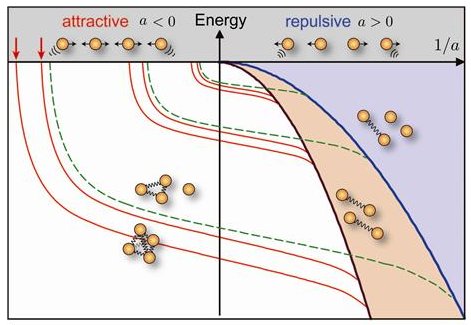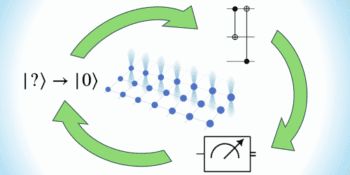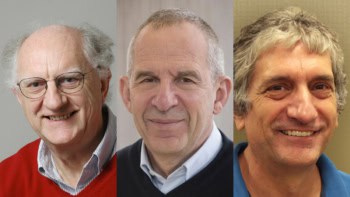
Physicists in Austria have confirmed that four atoms can be coaxed into forming bound states in an ultracold gas — even though pairs of the same atoms do not bind together.
The loosely bound quartets had been predicted just six months ago and their discovery is another reminder of just how useful ultracold gases can be in exploring fundamental aspects of quantum physics.
Understanding how two objects interact with each other is fairly easy — Newton’s theory of gravity, for example, can describe how a single planet orbits the Sun. But when more than two objects are involved things becomes very complicated. Just adding another planet to the system makes the equations of Newtonian gravity impossible to solve exactly.
However, nearly 40 years ago the Russian physicist Vitali Efimov was able to calculate that three atoms should, in principle, be able to form quantum states that are loosely bound together — despite the absence of bound states of any two pairs of atoms in the system. This counterintuitive situation only occurs for atoms that are bosons; that is, atoms that have integer values of intrinsic angular momentum, or spin.
Three-body Efimov state
In 2006 Hanns-Christoph Nägerl of Innsbruck University and colleagues spotted such a three–body Efimov state in a gas of ultracold caesium atoms. They did this by cooling the gas to just 10 nK to create a macroscopic quantum state called a Bose-Einstein condensate (BEC). A magnetic field was used to carefully tune the interaction strength between the atoms. The creation of trimers was inferred because the BEC lost atoms in groups of threes — so-called “recombination losses”.
What the team didn’t know at the time is that their data also suggested that four caesium atoms were forming loosely bound quartets. They didn’t consider this because no-one thought it was possible. But then in 2008 Javier von Stecher and colleagues at the University of Colorado calculated that the Efimov trimer seen in 2006 could capture an extra atom to become one of two different bound quartets.
Lurking in the data
When the Colorado group took a closer look at the 2006 experimental data they saw a clear signature of one of the two possible quartets. Now, Nägerl and colleagues have repeated their experiment — and have found both quartets just where von Stecher predicted.
As well as illustrating how ultracold gases can be used to simulate few–particle interactions that could occur in systems as diverse as quantum dots and nuclei, this latest discovery offers physicists a way of studying Efimov trimers by how they interact with four–body states.
The research is reported in Physical Review Letters



